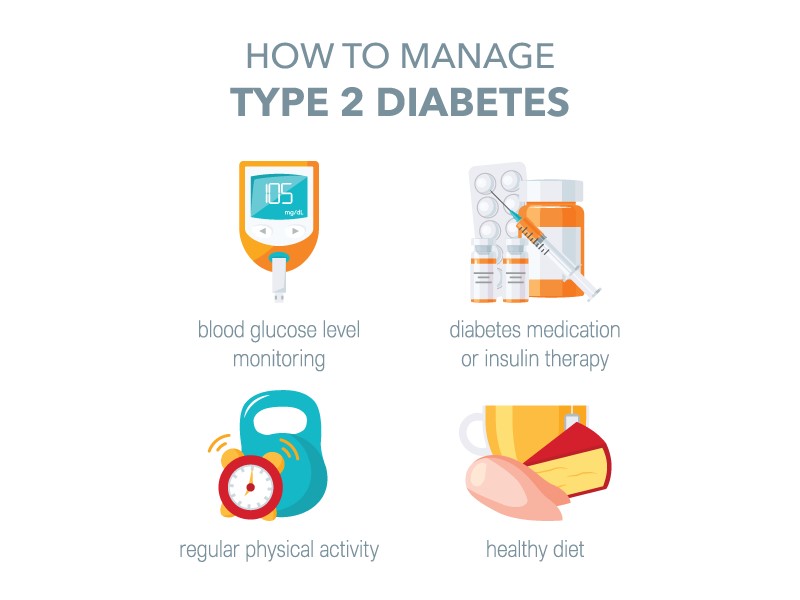
We’ll confirm your booking shortly!
Please provide your number to receive updates.
Enter the 6-digit verification code we just sent you to through SMS. Change Mobile

Type 2 diabetes is a chronic metabolic disorder that affects how the body processes blood sugar (glucose). In this condition, the body becomes resistant to insulin or doesn't produce enough insulin to regulate blood sugar levels effectively. While genetics and lifestyle factors like obesity and physical inactivity can contribute to developing type 2 diabetes, diet plays a crucial role in managing the condition. In this blog, we'll learn how eating affects your type 2 diabetes and share some diabetes management dietary tips for managing the condition.
Carbohydrates are essential nutrients that provide the body with energy. However, type 2 diabetes tests show consuming too many carbohydrates at once can cause a rapid rise in blood sugar levels, which can be dangerous. These macromolecules are broken down into glucose and absorbed into the bloodstream. Insulin helps transport glucose from the bloodstream into the body's cells, where it's used for energy. In people with type 2 diabetes, insulin resistance can make it challenging to regulate blood sugar levels effectively.
Diabetes management requires you to select the right types of carbohydrates, and consuming them in moderation can help manage blood sugar levels. Foods high in fibre, such as whole grains, fruits, and vegetables, are digested more slowly than refined carbohydrates like white bread, pasta, and sugary drinks. Slowly digesting carbohydrates can help prevent blood sugar spikes and promote satiety, which can help with weight management.
Protein is essential for building and repairing tissues and is an essential nutrient in the diet. However, consuming too much protein at once can also cause a rise in blood sugar levels. When the body doesn't have enough carbohydrates to use for energy, it can turn to protein to make glucose. This process, called gluconeogenesis, can cause blood sugar levels to rise.
Adding lean protein sources like chicken, fish, beans, and lentils can help manage blood sugar levels. These protein sources are also lower in fat and calories than protein sources like beef and pork, which can help with weight and diabetes management. Additionally, consuming protein with carbohydrates can help slow down glucose absorption into the bloodstream and prevent blood sugar spikes.
Choosing healthy fats like those found in nuts, seeds, avocados, and fatty fish can help manage blood sugar levels and reduce the risk of heart disease. These healthy fats are also higher in fibre and protein than foods high in saturated and trans fats, which can promote satiety and weight management.
Here are some dietary tips for managing type 2 diabetes:
What you eat significantly impacts managing type 2 diabetes. Choosing healthy carbohydrates, proteins, and fats in moderation, monitoring portion sizes, and eating various foods can help manage blood sugar levels and reduce the risk of complications like heart disease. By making healthy dietary choices, people with type 2 diabetes can live a healthier, more fulfilling life.
Discover precision diagnostics with Pathkind Labs, a trusted name in diagnostic services in India. Our NABL accredited labs, equipped with advanced technology, are staffed by a certified team of over 200+ senior pathologists and 2000+ technicians. From tailored health check-ups to specialized tests in Oncology, Neurology, Gynaecology, Nephrology, and more, we've got your health covered. Skip the hassle with online booking for tests or check-ups, available for both lab visits and at-home blood collection. For a seamless experience and early detection, choose Pathkind Labs in Gurugram. Book your appointment today and experience diagnostics made easy.
© 2025 Pathkind Diagnostics Pvt. Ltd. All Rights Reserved | Unsubscribe
